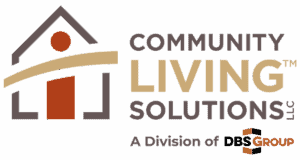Senior Care Technology: The Future is Now
Wednesday, June 21, 2017
Technology for Senior Living Communities
From robots to wearables, senior care technology is evolving before our eyes. While senior living communities struggle with recruiting a quality workforce, these technologies have some promising applications. The use of this technology and the data it gathers could reduce stress on a workforce already spread thin while providing valuable health and wellness information to caregivers.
We wanted to share just a few of the technologies we’ve read about that are already changing the way seniors live.
Health monitoring devices for elderly residents
As technology keeps pace with aging baby boomers, innovators are discovering that developing products specifically for the burgeoning elderly population is lucrative business. In fact, the senior care technology market is now estimated at nearly $280 million. The health monitoring devices already worn by people of all ages are giving way to products that not only monitor an individual’s health but can also collect data on specific conditions to provide life-saving feedback.
Here are just a few of the latest tech trends in health monitoring:
- Smart clothes that monitor health and prompt medication reminders now make up the largest share of the smart textile industry. It’s expected this industry, which is fast replacing smart watches and other devices, will grow to $843 million by 2021. Among the smart clothes on the market are socks that diabetic patients wear to warn them of a pending risk of foot ulcers.
- Smart eating utensils and cups now collect data on hand tremors, specifically for those who live with Parkinson’s disease. They also are programmed to remind users to drink plenty of water, for instance.
- Finally, while many may worry that robots will replace people in jobs (or, in some cases, are replacing), robots may be a welcoming reality in senior care. It’s expected that the 65+ population will increase 181 percent by 2050 while those ages 15 to 65 will increase just 33 percent. That leaves no doubt senior living communities will need to find staffing alternatives. The answer may be robots that measure vital signs, answer basic health questions, send alerts about people who have fallen and provide general assistance to care staff.
Assistive technology for the elderly
Health monitoring devices for elderly residents are also doubling as assistive technology for the elderly.
For example, some smart clothes are equipped with sensors that send a vibration to the blind or visually impaired to warn them of upcoming obstacles—the closer the obstacle, the stronger the vibration. Clothing also can detect imbalance, warning people of a potential fall risk. Some wearables are even equipped with airbags that deploy to cushion a fall, lessening the chance of broken bones.
As seniors move less and have poorer circulation, they often complain of cold hands and feet. Digitsole® is an interactive shoe insole that keeps a person’s feet warm. The temperature can be changed with use of a smartphone app.
Technology exists for ALS and MS patients, whether they are elderly or not, to control lights, TVs, window shades, heat and air conditioning, and more with the blink of their eyes. It’s expected this is the future for assisted living and skilled nursing facilities caring for residents with mobility issues.
And while robots are expected to work side-by-side with caregivers, they are already providing needed mental stimulation to those in long-term care. These social assistive robots interact and communicate with residents, providing therapy, entertainment and companionship.
- A robotic dog used in a memory care facility in Durham, N.C., brought great relief to residents, increasing their engagement and reducing stress.
- PARO® has garnered much press in the industry. The adorable baby seal responds to residents who speak and pet the robot.
How to benefit from senior care technology
As tech savvy baby boomers —in relation to their parents—enter senior living communities in coming years, they will expect facilities to be connected for easy access to laptops, mobile devices and cloud-based apps. But, the future of senior living communities also depends on how other technologies can be used to offset labor shortages and improve the bottom line. In fact, many of the technologies discussed may open the door to new opportunities to differentiate yourself and add a new revenue stream by offering services to the greater community outside your doors.
If you are looking to update your facility to accommodate new technologies or if you’d like to build a new technologically advanced community, contact us for a free consultation. Or, call Terry McLaughlin at 920-969-9344.
Search Blog
Categories
Archives
- June 2025
- August 2023
- April 2023
- February 2022
- March 2021
- February 2021
- April 2020
- January 2020
- December 2019
- November 2019
- July 2019
- April 2019
- March 2019
- February 2019
- January 2019
- November 2018
- September 2018
- August 2018
- July 2018
- June 2018
- May 2018
- April 2018
- March 2018
- February 2018
- January 2018
- December 2017
- November 2017
- October 2017
- September 2017
- August 2017
- July 2017
- June 2017
- May 2017
- April 2017
- March 2017
- February 2017
- January 2017

